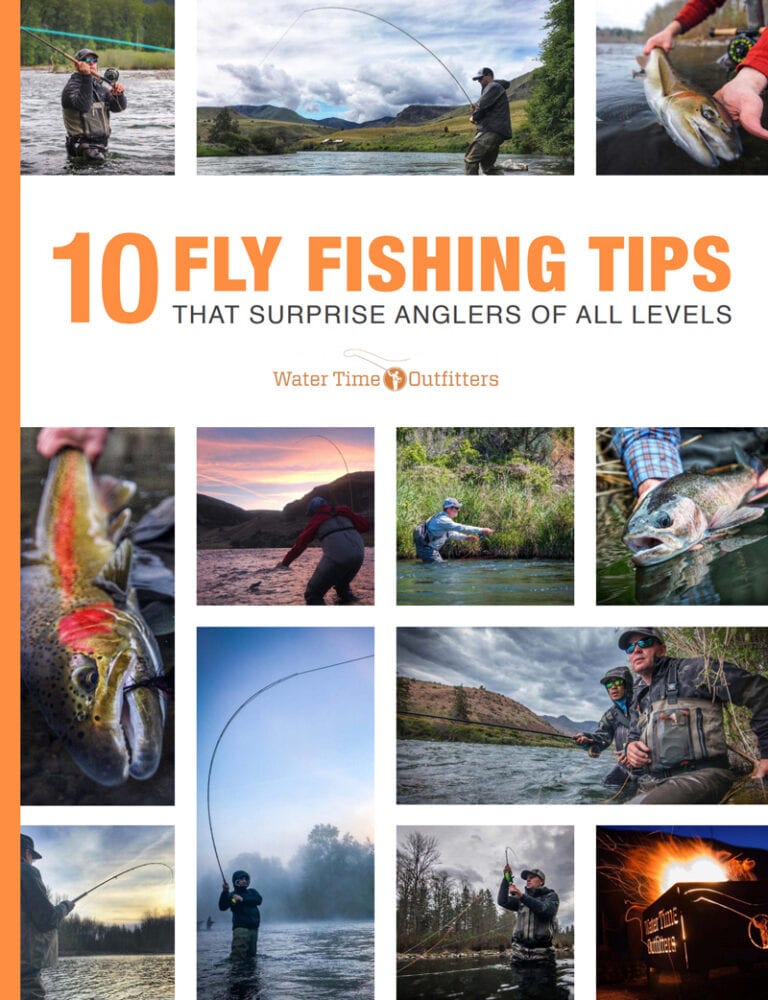Choosing the Right Fly for Winter Steelhead
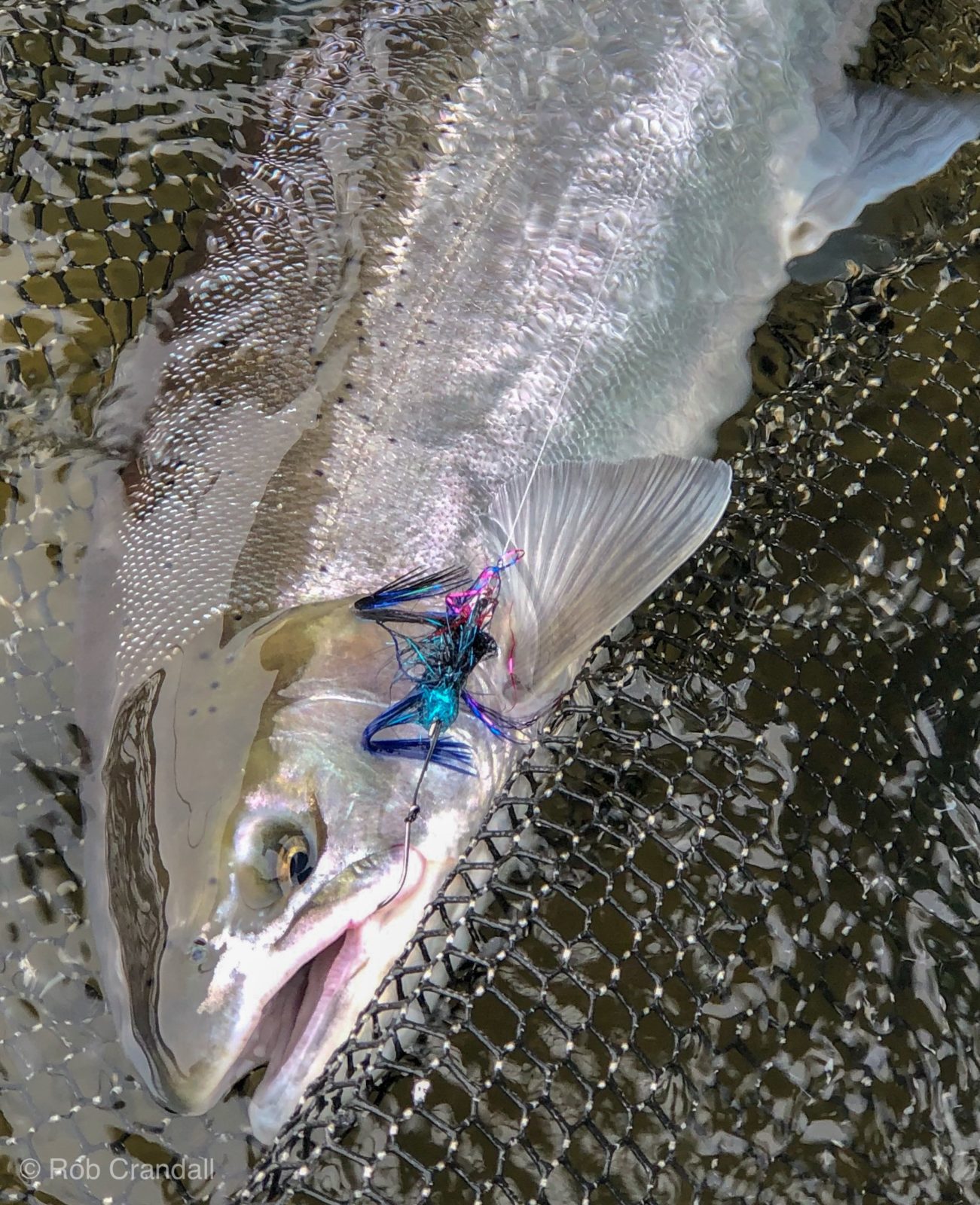
Choosing the right fly for Winter Steelhead
One angler works through the run first, he’s an expert; he has fished around the world for steelhead and the cast, swing, step routine is a natural dance for him like pulling on jeans in the morning-he is methodical and efficient with his simple unweighted fly. The second angler is new to the game, struggling with the casting, wading and doing his best to get a good presentation with his small lead eyed fly.
His efforts look labored and he’s already got a sore arm on the first run of the day.
However, when the bumbling angler following the pro hooks up on an AMAZING STEELHEAD on water that was just fished by the expert- you’ve got to wonder why? Was it the fly that made a difference? Let’s look at choosing winter steelhead flies- the right ones for the right situation.
There are many theories about why steelhead eat a fly which makes your job choosing winter steelhead flies that much tougher. Is it a territorial response, triggered feeding response or simply curiosity? While a plethora of ideas abound so do fly patterns. How do you choose the right one? What are the critical elements that make one fly better than the other. Is it truly, only presentation that matters?
How does fly size, shape and color play into the game and what does water depth, temperature and river color do to our success? The questions abound and the answers are often blurry and involve a lot of guesswork. The truth is, we don’t know the mind of the steelhead except by what we experience in the test pool of every day fishing. The brief and precious encounters we have with steelhead are our only glimpses into the mind of steelhead and why they eat a fly.
It’s the culmination of these moments in time that collaborate a story for us. Bread crumbs of truths slowly emerge and at least we find relatively consistent results with certain aspects. Let’s look at some commonly held beliefs and I’ll share some theories of my own on what I’ve found in 30 years of guiding steelhead. See if you find some clues that can help you get closer to the prize.
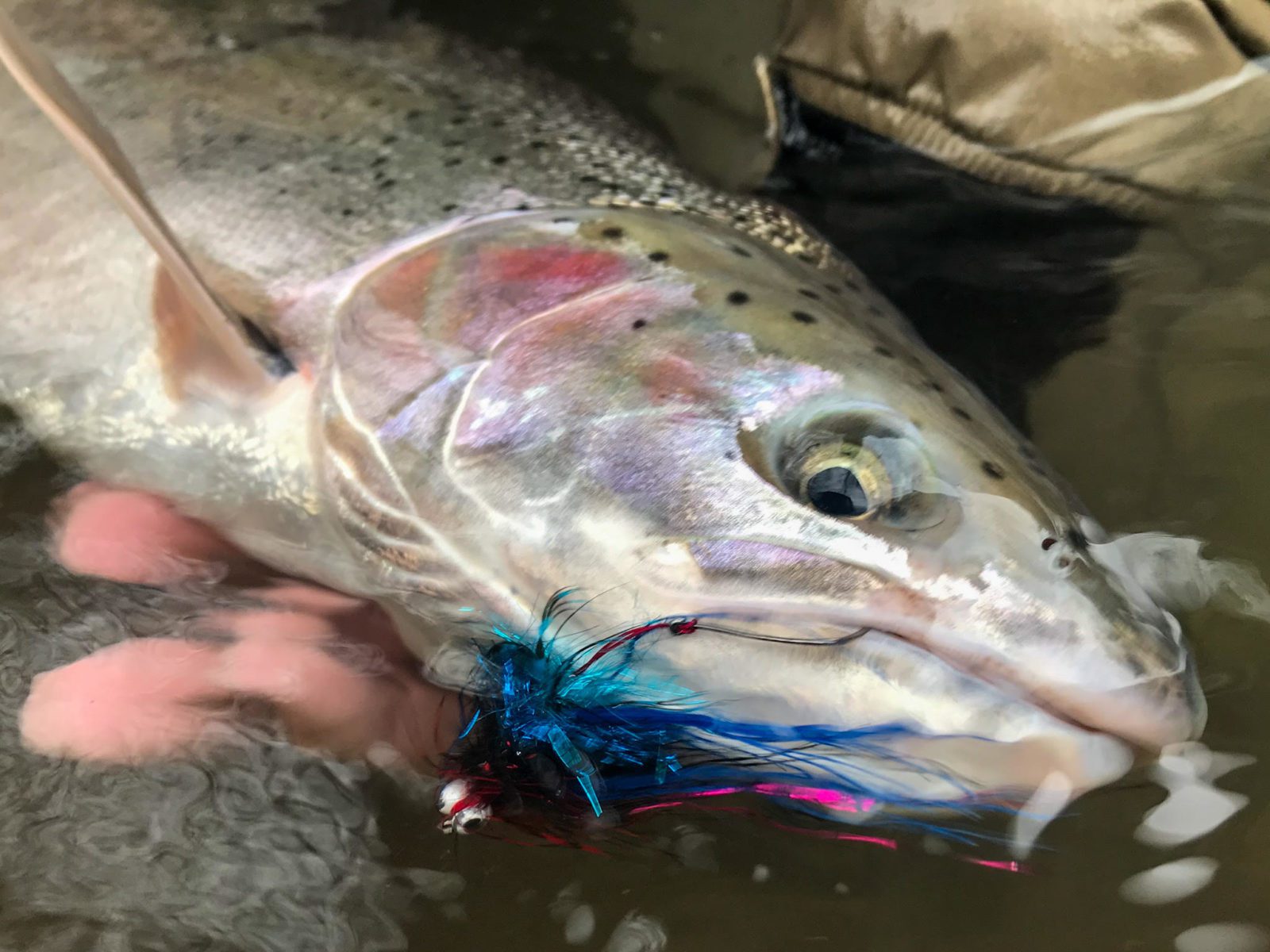
Choosing the right fly for Winter Steelhead – Common Assumptions but are they Right?
Dark days, use dark colored flies and light days use light colored flies. This theory has been a common strategy recited by many steelhead anglers. When it comes to winter steelhead I find it to be lacking. To be more on point with success one needs to look closer at the details.
Dark days are often cloudy or rainy days. These days in the Pacific NW tend to correlate with green or colored water during the winter months. When the water is murky or even green offering somewhat limited visibility it also correlates to warmer water. When the water is warmer steelhead tend to migrate more. When they are on the move they are also tend to exhibit more aggressive behavior. My guess is reduced visibility that gives them a sense of security and with warmer water temps they tend to move more for a fly.
Follow along in with this example-consider what colors show up best in darker conditions? When I see a fly in the water on dark days the fly that shows up best is actually a brighter fly. During lower visibility conditions I’ve found my best success with flies that are pink, cerise, hot orange, pink/white etc…basically opposite of the theory, “dark days use dark flies”.
Conversely let’s look at the opposite side- use bright flies on bright days. During winter steelhead season when do we have bright days? Days it’s not raining…when the sky is bright it often correlates to clear water. When we have had a series of sunny days it’s not long til we have low clear water conditions. In the Pacific NW, when we have low clear water conditions the water is often cold. When the water is cold fish move less and are less aggressive in general.
My experience has been that the best results are to use darker flies during these conditions. A bright flashy fly is actually counter productive to fish that have been staged up in one spot often cast to daily (in other words have seen everything) or are so lethargic with the cold water they won’t move much. This is the time to break out the smaller darker flies. More leech type patterns or small intruders. The clearer and colder the smaller the fly. Ooops! That’s totally counter to the dark flies on dark days and bright flies on bright days mantra.
Those are some thoughts that work for me when it comes to Choosing Winter Steelhead Flies. I learned long ago to never say never with steelhead, often they have a mind of their own and will prove you wrong. However, take a careful look at what tends to work over and over again with time tested consistency and you’ll see that you may develop your own sense of when to use what.

Choosing the Right Fly for Winter Steelhead- How Heavy should your Fly be?
Fly weight is another aspect that is worth considering. Remember the pro angler in the first paragraph whose buddy caught the fish behind him. I saw that happen one day while guiding and it reminded me the importance of the right fly weight. Some water an unweighted fly is best-anytime you might end up snagging the bottom mid-swing consider an unweighted fly (or a lighter sink-tip). Unweighted flies are easiest to cast but in runs where conflicting currents and faster flow keep your fly from getting down a weighted fly often helps make the difference.
Getting your fly half the depth of the water should be your goal during the winter months. (For a great lesson on getting your fly deeper check our our “5 Steps to Winter Spey Success” or attend one of our Winter Spey Mastery & Fishing Classes). If your fly is not deep enough when the water is cold you won’t be consistently successful. I like a small lead eye on most of my flies. I think this gives the fly added motion in the water often the difference to elicit the strike.
However, when water is low and clear a lead eye might be simply too much weight and you will snag bottom. This simple snag may end up costing you fish in a low clear pool as you thrash about trying to unhook your fly from the bottom.
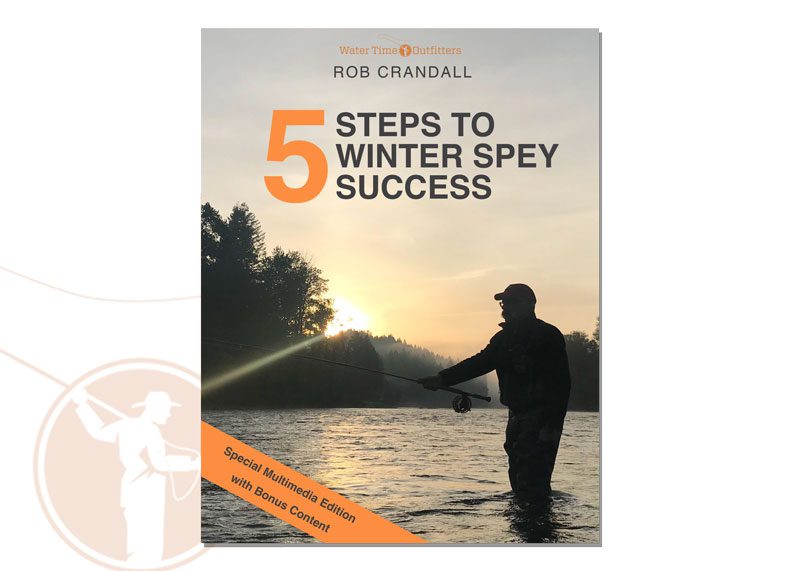
Choosing the Right Fly for Winter Steelhead- Stinger Hooks
A stinger hook style fly will typically give the best hookups. Often steelhead exhibit curious characteristics when they encounter your fly and will nip at it from the back end of the fly. Having a hook placed at the back of the fly will yield much better results than not. Stinger style flies are great – they give you the flexibility to change out the hook for a newer sharper hook as needed. (My favorite hook for this is a sz 2 Gamakatsu Octopus style hook). They also are typically a shorter shank which will be better for fighting fish. A shorter shank gives the fish less leverage to tear out the hook. Stinger style flies for winter steelhead are my favorite.
Choosing the Right Fly for Winter Steelhead – How Big Should They Be?
Ever show your fly box to a fly fishing guide and he say’s, “These are nice but let’s just use one of these.” As he pulls a fly from his fly box. Often times, the fly might be the perfect color or style but it’s just too big or too small for the situation. The size of your fly is an important consideration- what is too big, and what is too small? I think fly size depends on a number of variables such as where are you, what are the water conditions, how big is the body of water your in?
These variables all come into play when selecting fly size. If your in northern BC a large fly is common. If your on a small coastal stream in Oregon too large a fly in small water and your limiting your odds of success. I’ve found that fly sizes 2″-3″ sufficient for most winter steelhead conditions. For off colored water and big wild steelhead fly sizes 3″-4″-4-1/4″ provide a bigger target and more visibility. Rarely do I need a fly bigger than that. Low and clear water scale your offering to the 2″ -2-1/2″ range for more success.
Choosing Winter Steelhead Flies, Get some! Check out Rob’s Favorite Flies at a fly shop near you or order some for yourself here:
Choosing the Right Fly for Winter Steelhead
Crandall’s Steelhead Fly Combo Kit. Get the flies that consistently produce for a wide variety of winter steelhead water conditions.
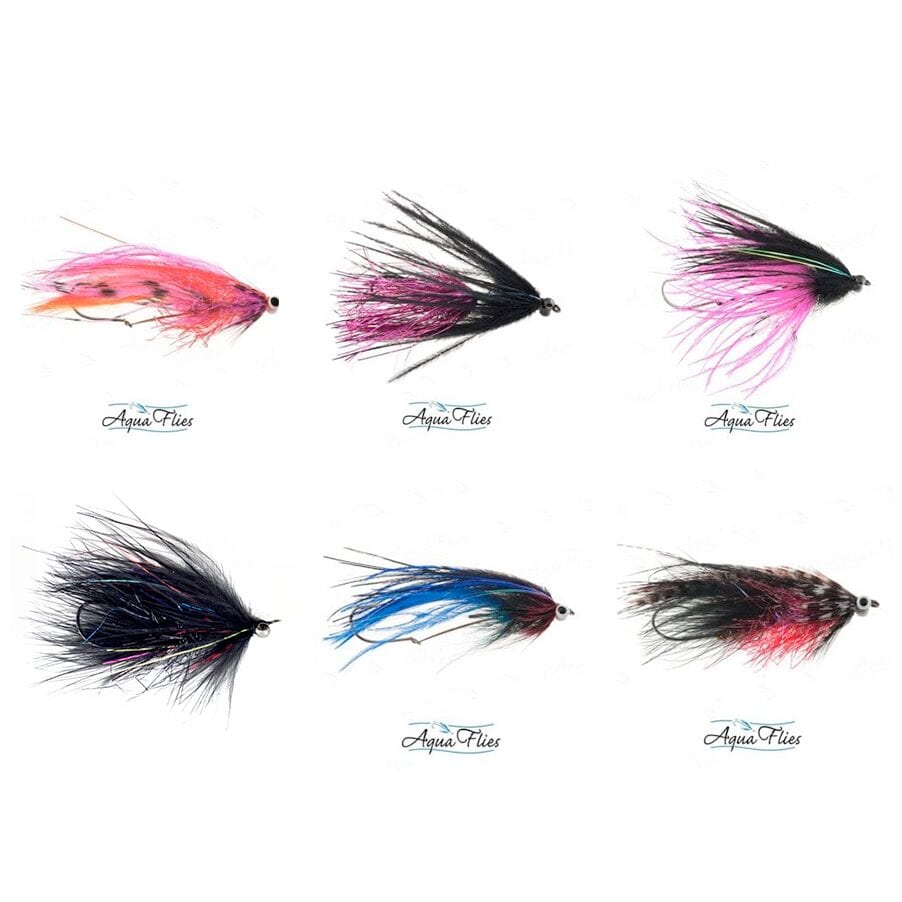
Water Time Outfitters, Inc is run by a team of guides who are passionate about steelhead fly fishing! That’s why we made the t-shirts “Swing It Like you Mean It”. We aim to surpass your expectations with expert, fun loving guides and exceptional hospitality, so you can focus on your love of fishing, maximize your success and take home memories that last a lifetime! See more on our website: watertimeoutfitters.com
See us on Instagram and follow our tips and trips!

